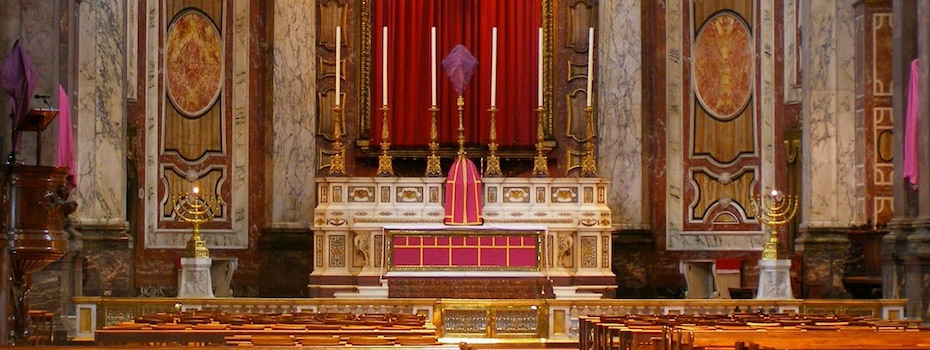 In our consideration of some of the Roman basilicas and churches that are certainly worth your time on any visit to Rome, we'll take a slightly different turn in this article from the medieval basilicas we have been looking at to date and consider a church that is thoro…
In our consideration of some of the Roman basilicas and churches that are certainly worth your time on any visit to Rome, we'll take a slightly different turn in this article from the medieval basilicas we have been looking at to date and consider a church that is thoro…
Our Advertising Partners
-
Many of our "before and after" series involve major restorations or renovations, and while those projects are clearly of interest,...
-
It is well enough known that when Benedict XVI rose to the papal office one of the tasks he set about was attempting to show continuity with...
-
To the person who simply enjoys beautiful art and architecture, distinctions like "baroque" or "rococo" might seem overl...
-
The global pandemic has disrupted the normal celebration of the Holy Week in Spain, where, for a second year, the government has forbidden t...
-
Halloween is a liturgical holiday. Anyone would be forgiven for not knowing that, because almost nobody keeps it that way anymore—to such a ...
-
Beauty attracts. The above images display what the interior of the German-Gothic church of St. Mary in Menasha, Wisconsin (Diocese of Green ...
Blog Archive
-
▼
2022
(261)
-
▼
November
(22)
- Counter-Reformation Churches of Rome: Sant'Andrea ...
- Before and After: St. Joseph's in Leavenworth, Kansas
- Three Titular Cardinals of San Lorenzo in Lucina a...
- Baroque Theatricality and Vestments as Seen in the...
- The Iconic 'A Griccia' Motif in Renaissance Vestments
- The Chapel of the Martyrs of the Cathedral of Otranto
- St. Cecilia, Virgin and Martyr, and Her Basilica i...
- Festal Venetian Hangings
- The History and Forms of the Christian Altar: The ...
- Batchelder Tiles: Our Lady of Victory Chapel
- Vestments and Pontificals of Cardinal Vincenzo Mar...
- Showcasing One of the Largest Vestment Collections...
- Paintings of the Old Sacristy of the Gesù in Rome
- Our Lady of Walsingham Shrine: The Slipper Chapel ...
- Minor Roman Basilicas: San Stefano Rotondo and "Th...
- The Abbey of Santa Maria di Grottaferrata
- Before and After: The Cathedral of the Immaculate ...
- A Proposed University Chapel Design from McCrery A...
- Altars for the Holy Souls in Purgatory
- Illustrations of Purgatory and Memento Mori in Ant...
- Memento Mori Vestments for All Souls Day
- The Nature of the Association of Vestments Symbols...
-
▼
November
(22)
Donate
Copyright ©
Liturgical Arts Journal | Powered by Blogger





































